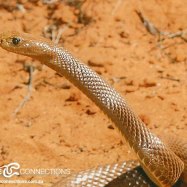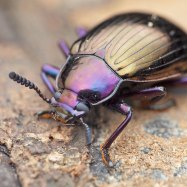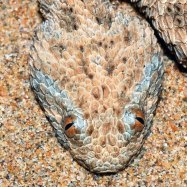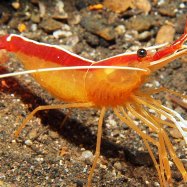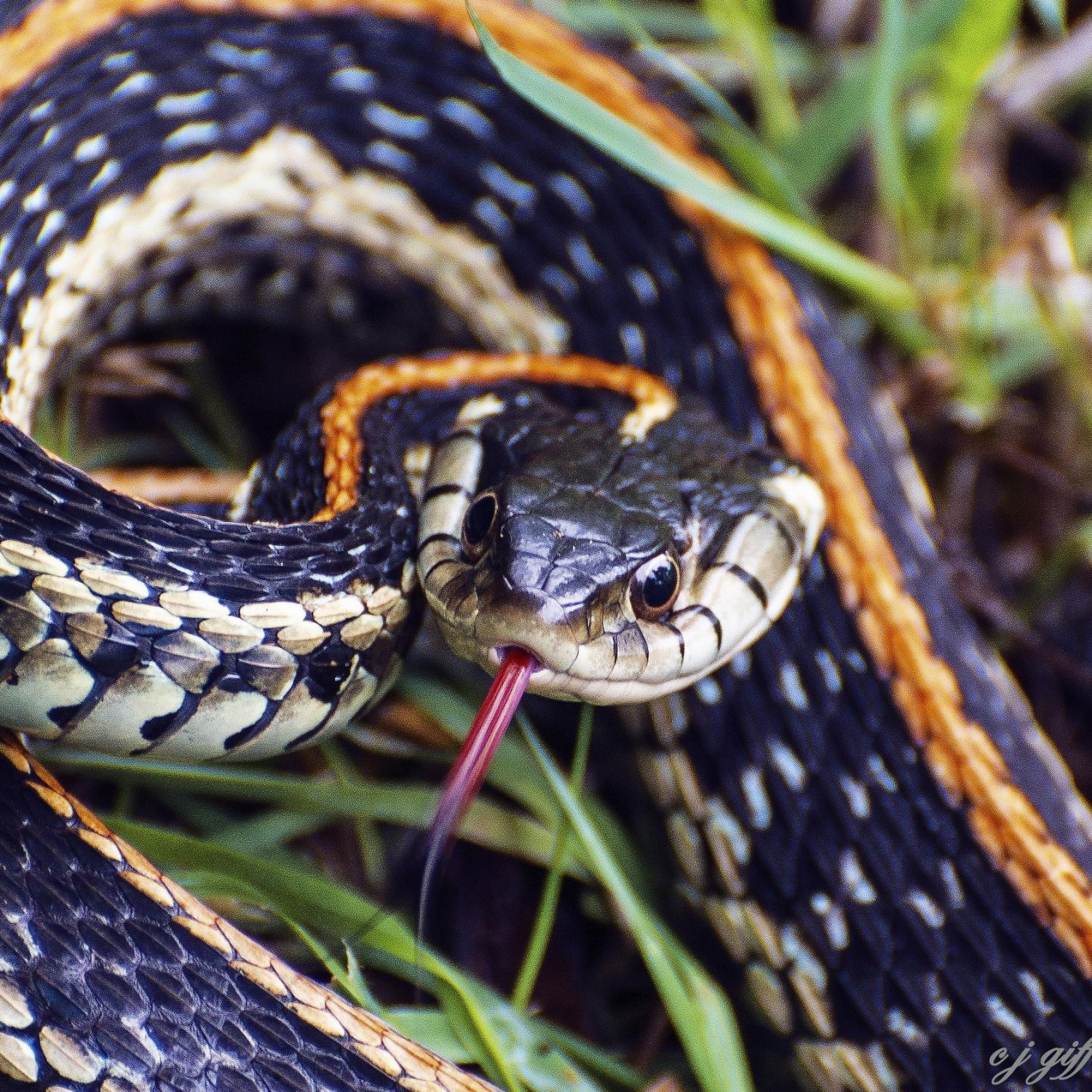
Ribbon Snake
2 to 3 feet
The Ribbon Snake, found in Eastern North America, is a slender and elongated colubridae snake that can grow up to 2 to 3 feet in length. This non-venomous serpent is known for its distinctive stripes and can often be seen near bodies of water, preying on small fish, frogs, and insects. Keep an eye out for this beautiful reptile on your next hike! #RibbonSnake #EasternNorthAmerica #Colubridae
Animal Details Summary:
Common Name: Ribbon Snake
Kingdom: Animalia
Habitat: Marshes, wet meadows, and the edges of streams and ponds
The Sleek and Striking Ribbon Snake: A Marvel of Evolution
In the vast landscape of the natural world, there are many creatures that capture our attention with their unique and intriguing qualities. One such animal is the ribbon snake, a beautiful reptile that is a true marvel of evolution. With its striking coloration, slender and elongated body, and impressive predatory capabilities, the ribbon snake has earned its place as a sought-after species for animal enthusiasts and researchers alike.Discovering the Ribbon Snake
Scientifically known as Thamnophis sauritus, the ribbon snake is a harmless colubrid species that is commonly found in marshes, wet meadows, and the edges of streams and ponds Ribbon Snake. Indigenous to the eastern part of the United States, this sleek serpent has been studied and admired by scientists and nature lovers for centuries.The name "ribbon snake" is derived from its characteristic thin stripes of black and white or yellow, which run along the length of its body. These striking markings serve as a natural camouflage, blending seamlessly with the surrounding vegetation and allowing the ribbon snake to hide from predators and surprise its prey.
Classification and Evolution of the Ribbon Snake
As with all living organisms, the ribbon snake has a specific classification in the animal kingdom. It belongs to the phylum Chordata, class Reptilia, and order Squamata, which encompasses snakes, lizards, and amphisbaenians. Its family, Colubridae, also includes other popular snake species such as garter snakes and rat snakes.The evolution of the ribbon snake is a fascinating subject. Through years of adaptation and natural selection, they have developed unique characteristics that make them perfectly suited for their marshland habitat. Their slender and elongated bodies allow them to move through the dense vegetation with ease, while their bright coloration helps them blend in with their surroundings Rove Beetle. They also have specialized scales that enable them to swim gracefully in water, making them well-equipped for their aquatic lifestyle.
An Impressive Appetite
The ribbon snake is a carnivorous creature, meaning it feeds on other animals to survive. Its diet mainly consists of frogs, toads, fish, and small rodents, which it hunts down using a combination of speed and stealth. Despite its small size, the ribbon snake is a formidable predator. It can detect its prey's movements through vibrations in the ground, and its slender body allows it to move with great agility as it strikes its target.What is even more impressive is the ribbon snake's ability to feed on prey much larger than itself. Using its specialized teeth, it can swallow its prey whole, making it a top predator in its ecosystem. This adaptation has allowed the ribbon snake to thrive and survive in its habitat, further solidifying its status as a true marvel of evolution.
A Home in Eastern United States
While the ribbon snake can be found in various parts of the eastern United States, it is believed that their populations are declining due to habitat loss and fragmentation. This is because marshes and wetlands, which are essential habitats for the ribbon snake, are often drained or filled in for development purposes. Fortunately, efforts are being made to conserve these critical ecosystems and protect the ribbon snake's natural habitat.Along with its natural habitat, the ribbon snake is also facing threats from human activity. Agriculture practices, pollution, and the use of pesticides can negatively impact the ribbon snake's population, as well as other species that share its habitat. Therefore, it is crucial to raise awareness about the importance of preserving wetlands and to promote responsible land use to protect these incredible creatures.
A Fascinating Species for Research
Aside from its appealing physical characteristics, the ribbon snake is also a highly researched species. Its unique color patterns and behavior make it an ideal subject for studies on topics such as evolution, predator-prey dynamics, and sexual selection. Scientists have been able to learn about the ribbon snake's behavior, communication, and mating habits through observation and experimentation, contributing to our broader understanding of the natural world.One of the most remarkable findings in ribbon snake research is their ability to communicate through "tail-flagging." This is when the snake vibrates its tail rapidly, creating a wave-like motion. It is believed that this behavior serves as a warning to potential predators or as a way for male snakes to attract female mates.
Beauty and Brains
When we think of intelligence in the animal kingdom, snakes are not often the first creatures that come to mind. However, the ribbon snake has proven itself to have both beauty and brains. Studies have shown that they have an excellent spatial memory, able to remember the locations of food sources and shelter within their habitat. They are also capable of learning, making them an even more fascinating species to study.An Icon of Eastern North America
The ribbon snake is undoubtedly an icon of the eastern part of North America, with its striking appearance and significant contributions to scientific research. It is a vital part of the ecosystem and plays a critical role in maintaining the balance of its habitat. Its unique characteristics and impressive capabilities make it a species worth admiring and protecting for generations to come.In conclusion, the ribbon snake is a creature that has captured the hearts and minds of many with its sleek and striking appearance and remarkable abilities. Through its evolution and adaptation, it has become a top predator and a valuable subject of research. However, it is also a fragile species that needs our protection and conservation efforts to survive. So the next time you come across a ribbon snake, take a moment to appreciate its beauty and marvel at its incredible story of evolution.

Ribbon Snake
Animal Details Ribbon Snake - Scientific Name: Thamnophis sauritus
- Category: Animals R
- Scientific Name: Thamnophis sauritus
- Common Name: Ribbon Snake
- Kingdom: Animalia
- Phylum: Chordata
- Class: Reptilia
- Order: Squamata
- Family: Colubridae
- Habitat: Marshes, wet meadows, and the edges of streams and ponds
- Feeding Method: Carnivorous
- Geographical Distribution: Eastern United States
- Country of Origin: United States
- Location: Eastern North America
- Animal Coloration: Thin stripes of black and white or yellow
- Body Shape: Slender and elongated
- Length: 2 to 3 feet
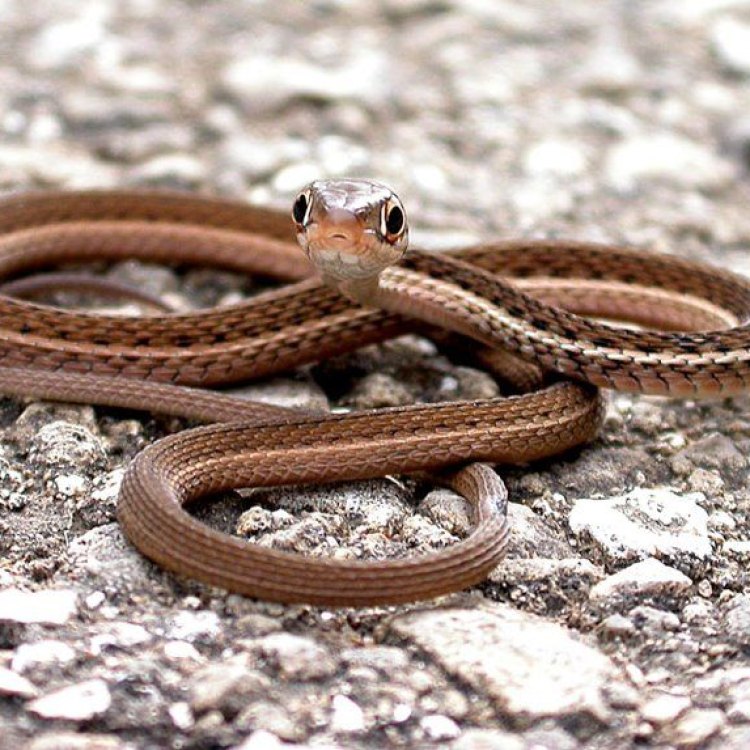
Ribbon Snake
- Adult Size: 2 to 3 feet
- Average Lifespan: 5 to 10 years
- Reproduction: Oviparous (egg-laying)
- Reproductive Behavior: Mating occurs in spring and females lay 3 to 20 eggs in the summer
- Sound or Call: Usually silent, but may hiss or vibrate their tails
- Migration Pattern: Non-migratory
- Social Groups: Solitary
- Behavior: Active during the day (diurnal)
- Threats: Habitat loss and degradation, pollution, and collection for the pet trade
- Conservation Status: Least Concern
- Impact on Ecosystem: Predator of small vertebrates and helps control their populations
- Human Use: Occasionally kept as pets
- Distinctive Features: Thin body with long tail and distinct stripes
- Interesting Facts: Can swim and climb trees, and are known for their agility
- Predator: Birds, mammals, and other snakes
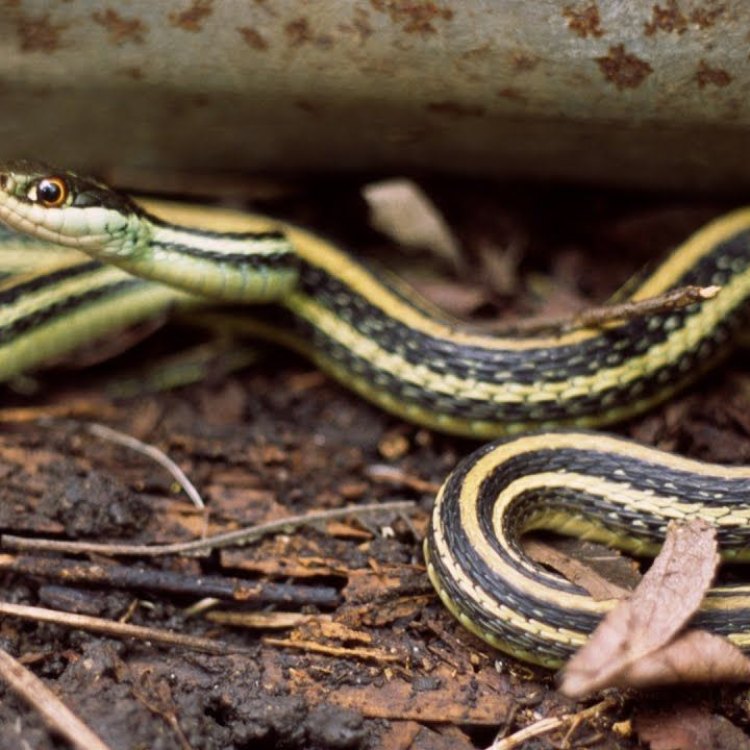
Thamnophis sauritus
The Ribbon Snake: A Fascinating and Unique Species
If you were to walk through a forest or a grassy wetland, you may come across a slender, graceful snake gliding through the grass or basking on a rock. With its distinctive stripes and long, ribbon-like body, the ribbon snake is a truly unique and fascinating species.The ribbon snake (Thamnophis sauritus) is a common sight in the eastern United States and parts of Canada, but many people are not aware of its existence. In this article, we will explore the various aspects of this intriguing snake, including its size, lifespan, reproductive behavior, threats, conservation status, and impact on the ecosystem PeaceOfAnimals.Com.
An Overview of the Ribbon Snake
The ribbon snake is a non-venomous North American species that belongs to the garter snake family. It is typically found in wetland areas, such as marshes, swamps, and streams, as well as meadows and forests near water sources. This species is primarily diurnal, meaning it is active during the day, which makes it easier to spot in its natural habitat.Adult ribbon snakes can reach a length of 2 to 3 feet, making them one of the smallest species in the garter snake family. They have a thin, slender body with a long tail, which gives them their distinct ribbon-like appearance. They are typically green or brown in color, with three light-colored stripes running down their body from the head to the tail. These stripes can vary in color from light yellow to cream, and they may also have black spots or speckles along the sides.
But what truly sets the ribbon snake apart is its remarkable agility. They are excellent climbers and can even swim, thanks to their long, slender body and strong swimming muscles Rockhopper Penguin. This gives them an advantage in hunting prey and escaping potential predators, making them a formidable species.
Reproduction and Behaviors of the Ribbon Snake
Like many other snakes, the ribbon snake is an oviparous species, meaning it lays eggs for reproduction. Mating occurs in the spring, and females will lay anywhere from 3 to 20 eggs in the summer. These eggs are typically laid in a sheltered area, such as under logs or in leaf litter, to protect them from predators and the elements.One interesting behavior of the ribbon snake is its use of a mating dance to attract a mate. During this dance, the male will flick his tongue at the female, a behavior known as “tongue fencing.” If the female accepts, they will intertwine their bodies and perform a beautiful and intricate dance together.
After the eggs hatch, the young snakes are independent and do not receive any care or protection from their parents. They grow quickly and reach sexual maturity within two to three years.
Ribbon snakes are primarily solitary creatures, except during mating season and when basking in the sun. They are relatively shy and will usually try to escape if approached by humans, but they may also hiss or vibrate their tails as a defensive warning.
Threats to the Ribbon Snake
Although not listed as an endangered species, the ribbon snake does face threats to its population. One of the most significant threats is habitat loss and degradation. As wetlands and other natural areas are destroyed for development or agriculture, the ribbon snake's habitat is also affected. This disrupts their natural behaviors, such as hunting and breeding, and can lead to a decline in their population.Pollution is also a significant threat to ribbon snakes. As they primarily live in wetland areas, they are vulnerable to water pollution, which can affect their health and reproductive abilities. This can have a significant impact on their population in the long run.
Another threat faced by the ribbon snake is collection for the pet trade. While they are not a commonly kept pet, some people may catch them in the wild and keep them in captivity. This has a negative impact on their population and can also lead to the spread of diseases.
Conservation Status and Impact on the Ecosystem
Despite these threats, the ribbon snake has a conservation status of least concern. This means that its population is relatively stable, and it is not at significant risk of extinction. This is due in part to the snake's ability to adapt to different habitats and its strong reproductive abilities.While it may not be on the brink of extinction, the loss of ribbon snakes can have a significant impact on their ecosystem. As predators of small vertebrates, such as frogs, mice, and insects, they play a crucial role in controlling their populations. This helps maintain the delicate balance of the ecosystem and ensures the survival of other species.
Human Use and Cultural Significance of the Ribbon Snake
The ribbon snake is not commonly kept as a pet, compared to other species like the garter snake, but they have been occasionally kept in captivity. However, they do not make ideal pets as they require specialized care and can be sensitive to handling.In some Native American cultures, the ribbon snake is considered a symbol of good luck and protection. Indigenous communities such as the Powhatan and Cherokee believed that the snake has healing powers and would use its skin to treat a variety of ailments.
Conclusion
In conclusion, the ribbon snake is truly a remarkable and unique species, with its delicate appearance and powerful abilities. From its slender, ribbon-like body to its impressive agility, this snake has captured the attention of many who have encountered it in the wild.While it may face threats to its population, the ribbon snake's adaptability and strong reproductive abilities have helped it maintain a stable population. As with any other species, it is crucial to protect and conserve their natural habitats to ensure their survival in the wild.
Furthermore, understanding and appreciating the role that the ribbon snake plays in its ecosystem can help us understand the importance of every species in maintaining a healthy and balanced environment. So next time you come across this beautiful snake in its natural habitat, take a moment to admire its unique features and appreciate its significance in the ecosystem.
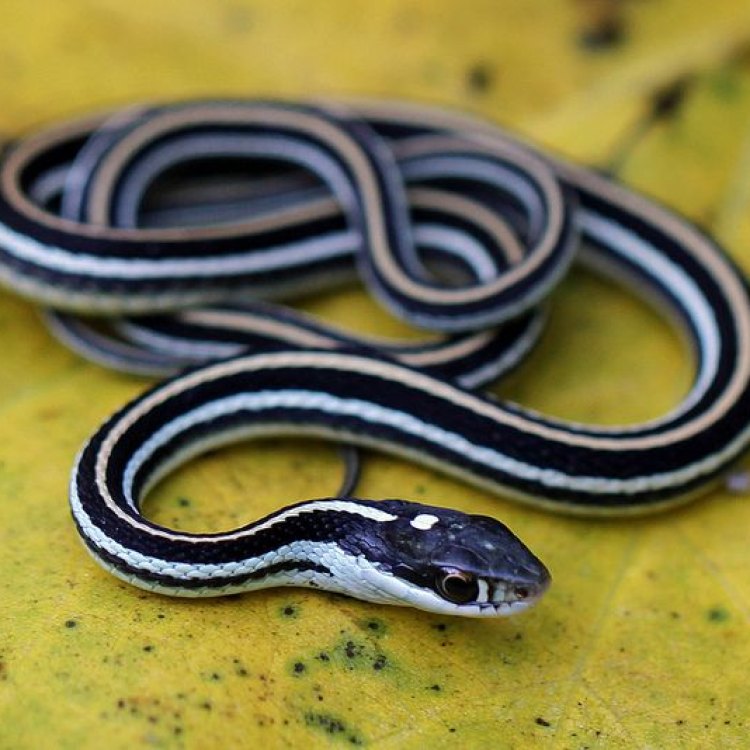
The Sleek and Striking Ribbon Snake: A Marvel of Evolution
Disclaimer: The content provided is for informational purposes only. We cannot guarantee the accuracy of the information on this page 100%. All information provided here may change without prior notice.






